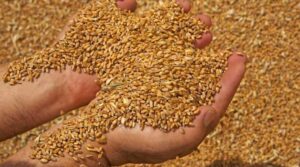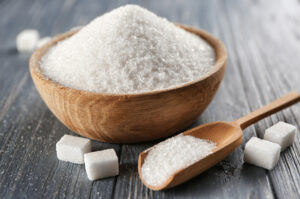
In 2022/2023 marketing year, Ukraine increased the production and export of sunflower oil by 25.4% compared to 2021/2022 MY, the press service of the association Ukroliyaprom reports.
“One of the main peculiarities of 2022/23 MY was the significant increase of sunflower seed processing at the domestic facilities starting from 2023, after the ban of its import by some EU countries. This allowed to significantly increase the processing of sunflower seeds within the country and, accordingly, the production of oil and its export by 25.4%, sunflower meal – by 27.3% compared to 2021/22 MY,” the company said in the report.
According to the report, the export of sunflower seeds decreased by 58% in the first eight months of 2023 compared to the same period of 2022. This made it possible to significantly increase its processing at domestic facilities and, accordingly, the production and export of high value-added products.
In 2022/23 MY, the production and export of soybean oil increased by 18%, and soybean meal – by 19.4%.
These figures could have been higher if soybean processing in the country had increased, especially given that exports of soybean products are mainly carried out by road and rail, the association noted.
In addition, in 2023, Ukraine increased the processing of rapeseed, as evidenced by the increase in exports of rapeseed oil in July-August this year by more than 20 times compared to the corresponding period in 2022.
“Ukroliyaprom forecasts that in 2023/2024 MY Ukraine’s production of main types of oilseeds will increase by 18.8%. This will be due to the expansion of production areas by 12.1% and an average yield increase of 5.7%, which was facilitated by favorable weather conditions. The largest increase in production is expected for sunflower seeds – by 15%.
As reported, Ukroliyaprom expects that in the season 2023/2024, Ukraine can produce up to 5 million tons of sunflower oil, while exports can reach 4.7 million tons.

Ukraine has begun exporting grain through Croatian seaports, First Vice Prime Minister and Minister of Economy of Ukraine Yulia Svyrydenko said during a bilateral meeting with Prime Minister of the Republic of Croatia Andrej Plenkovic at the Three Seas Initiative Summit in Bucharest.
“Ukrainian grain has already been exported through Croatian ports. Thank you for this opportunity. This trade route, although niche, is already popular. We are ready to develop it by expanding the capabilities of the transportation corridor. We believe that this logistics route will play an important role in bilateral trade between our countries even after the war,” the press service of the Ministry of Economy and Trade quoted her as saying.
According to the report, the parties discussed bilateral trade and exports of Ukrainian grain through Croatian ports. They also discussed the importance of jointly resolving the issue of export restrictions for Ukrainian exports. The meeting also touched upon the issues of demining, war crimes investigation, and opening new trade routes for Ukrainian grain exports.
The parties raised the issue of accelerating the localization of demining equipment production to start its production at the facilities of domestic enterprises.
“One of the most important tasks for Ukraine in the near future is to demine the territories and return potentially contaminated land to use. Both post-war recovery and further development of the national economy depend on the speed of this process. That is why we are grateful to all partners who help Ukraine resolve this issue,” Svyrydenko emphasized.
Plenkovic offered to assist Ukraine in investigating war crimes. This includes sharing Croatia’s experience and expertise in establishing special prosecutors and special police to investigate crimes committed during the war.
As reported, the main routes for exporting Ukrainian agricultural products after the shelling of port infrastructure on the Black Sea remain land transport and seaports on the Danube.
In May 2023, the European Commission banned imports of wheat, corn, rapeseed, and sunflower from Ukraine to Bulgaria, Hungary, Poland, Slovakia, and Romania at the insistence of these countries. On June 5, the European Commission extended the ban until September 15, 2023.

Despite a 20% reduction in crop production areas due to the occupation of a number of regions, favorable weather conditions will allow farmers to harvest and export wheat in the 2023/24 marketing year (MY) no less than last season, Minister of Agrarian Policy and Food Mykola Solsky said on the air of the United News marathon.
“The carry-over stocks of crops in 2023 are about five times less than in the 2022 season, when there were 27 million tons of agricultural products in the country as of mid-summer. On average, agriculture has been bringing in about USD2 billion a month to the state budget since the grain corridor started working properly,” he said.
Assessing the prospects for the 2023 harvest, the Minister noted that this season, 20% less production area has been allocated for crops than in pre-war 2021, due to the areas in Donbas, Zaporizhzhia and the south of the country that are currently under occupation. He also clarified that during the fall 2022 sowing campaign, winter crops were sown 25% less than in 2021.
“Thanks to the weather, we got a significantly higher yield on these areas. It was not a harsh winter, there were no sharp temperature drops, and there was enough humidity, which led to the increase in yield. It was difficult for farmers to save on seeds, herbicides, and fertilizers. But one factor compensated for the other,” explained Solsky.
Speaking about this season’s spring crop harvest, the Minister emphasized that a combination of natural and climatic factors, including a wet summer and average temperatures, affected the quality of grain, which will be worse than last season.
“We have less milling wheat and more feed wheat. But this is a standard situation for Ukraine, when the season depends primarily on weather conditions,” said the head of the agriculture ministry.
According to him, the tonnage of wheat for export to Ukraine in 2023/24 MY will be not less than last season.
Assessing the readiness of the agricultural business for the autumn-winter period, Solsky reminded that since the beginning of the war, Ukraine has been receiving many donor programs, some of which were implemented through the Ministry of Agrarian Policy. Therefore, the supply of generators, in particular, is many times higher than at the beginning of winter last year.
According to the Minister, gas will be the main challenge for business in the autumn and winter period. A positive factor was its low cost in 2022/23 MY, which was several times lower than before the war. However, in the last few weeks, the price has risen, which will affect the operation of elevators, Solsky explained. However, this factor, in his opinion, will also depend on the weather and the skill of entrepreneurs.
“When we talk about grains, the demand for gas (for the agricultural sector) will depend on the conditions under which corn will be harvested. It will be a wet autumn or not,” the minister said, adding that many farmers are now actively advancing and buying gas.
He stated that there are no gas subsidies for business, as the priority is to provide gas to the population. However, the situation will become clearer in late October and early November, and the agricultural market is preparing for it.

Ukraine in the season-2023 can export more than a third of the produced sugar, as about 1 million tons is enough to meet the needs of the domestic market, while the production forecast is 1.6-1.7 million tons, CEO of Astarta agroholding Viktor Ivanchik said.
“The opening of the sugar market by the European Union (in 2022 – IF-U) has significantly helped Ukraine. We can export a third, if not more, of this year’s crop. We have enough in Ukraine about 1 million tons. This year’s production forecast is 1.6-1.7 million tons. This potential should be unambiguously used. We need to gain a foothold in the markets. Both for the near and distant future – this is a serious factor of Ukraine’s entry into the European Union with its goods, services and labor force,” he said during the Business Breakfast with Forbes Ukraina on Wednesday.
Commenting on the investigation by the Antimonopoly Committee of Ukraine (AMCU) regarding possible cartel collusion between sugar producers, Ivanchyk noted that the AMCU “constantly observes, conducts this or that research.”
“Today we do not see such a problem. It was not there before. We have convincingly proved to AMCU, with whom we have been in communication for the last five years, that there are no violations of antimonopoly legislation. It makes no sense for us to agree on prices and volumes. We compete hard on the Ukrainian market, as it is surplus,” Ivanchyk explained and added that sugar producers are in contact with each other on the basis of the industry association “Ukrtsukor”, but do not discuss the issues of prices or sales volumes.
The CEO of Astarta also noted that with the opening of the market to the European Union, sugar producers and exporters fall under the European regulatory policy. This forces the management of the country’s largest sugar producer to “look even more meticulously at our and all our employees’ compliance with these requirements.”
“I don’t see any risks of coming under investigation,” he stated.
Asked about pressure, particularly from law enforcement agencies on business, Ivanchik declined to voice specific cases, but confirmed that Astarta also has to face such problems.
“To be in society and be free from problems in the business community is unrealistic. “Astarta tries to build relationships on a legislative basis. We are as law-abiding as possible. There is absolutely no reason to suspect us of anything,” he assured and confirmed that his colleagues have to face more complicated problems.
According to the head of the agricultural holding, there is an initiative to create a public association on the basis of the Federation of Employers of Ukraine (FEU), which is called “Manifesto-42” (from Art. 42 of the Constitution of Ukraine on the right of every citizen of Ukraine to conduct entrepreneurial activity – IF-U) to protect Ukrainian business from unjustified encroachments by law enforcement and controlling bodies.
Ivanchyk reminded that business has the right to publicly and legally defend its interests. “Especially since Ukrainian business has now shown very good examples of patriotic attitude, help, selflessness. This should be respected by the state in a partner-like manner,” he emphasized.
The CEO of Astarta noted that business received understanding from the state leadership, in particular, a month ago at a meeting with the President of Ukraine Volodymyr Zelensky, Prime Minister Denis Shmygal, teams of the Office of the President and the Cabinet of Ministers.
“We (representatives of business – IF-U) were assured that the state controlling bodies will pursue a legitimate policy on this matter, communicating with us through the business ombudsman and through our joint structures, such as the Federation of Employers of Ukraine, Ukrainian Club of Agrarian Business, European Business Association, CEO Club Ukraine. We will be able to build such relations absolutely openly, honestly and transparently”, – the head of Astarta is convinced.
“Astarta is a vertically integrated agro-industrial holding operating in eight regions of Ukraine. It includes six sugar factories, agricultural farms with a land bank of 220 thousand hectares and dairy farms with 22 thousand cattle, oil extraction plant in Globino (Poltava region), seven elevators and biogas complex.
In the first half of 2023, Astarta’s revenue from sales of key products increased by 64.8% year-on-year to UAH 10.72 bln. The main contribution was made by sales of sugar – UAH 3.27 bln, which increased by 75.5%, corn – UAH 2.66 bln (+53.2%) and soybean meal – UAH 1.96 bln (+84.5%).